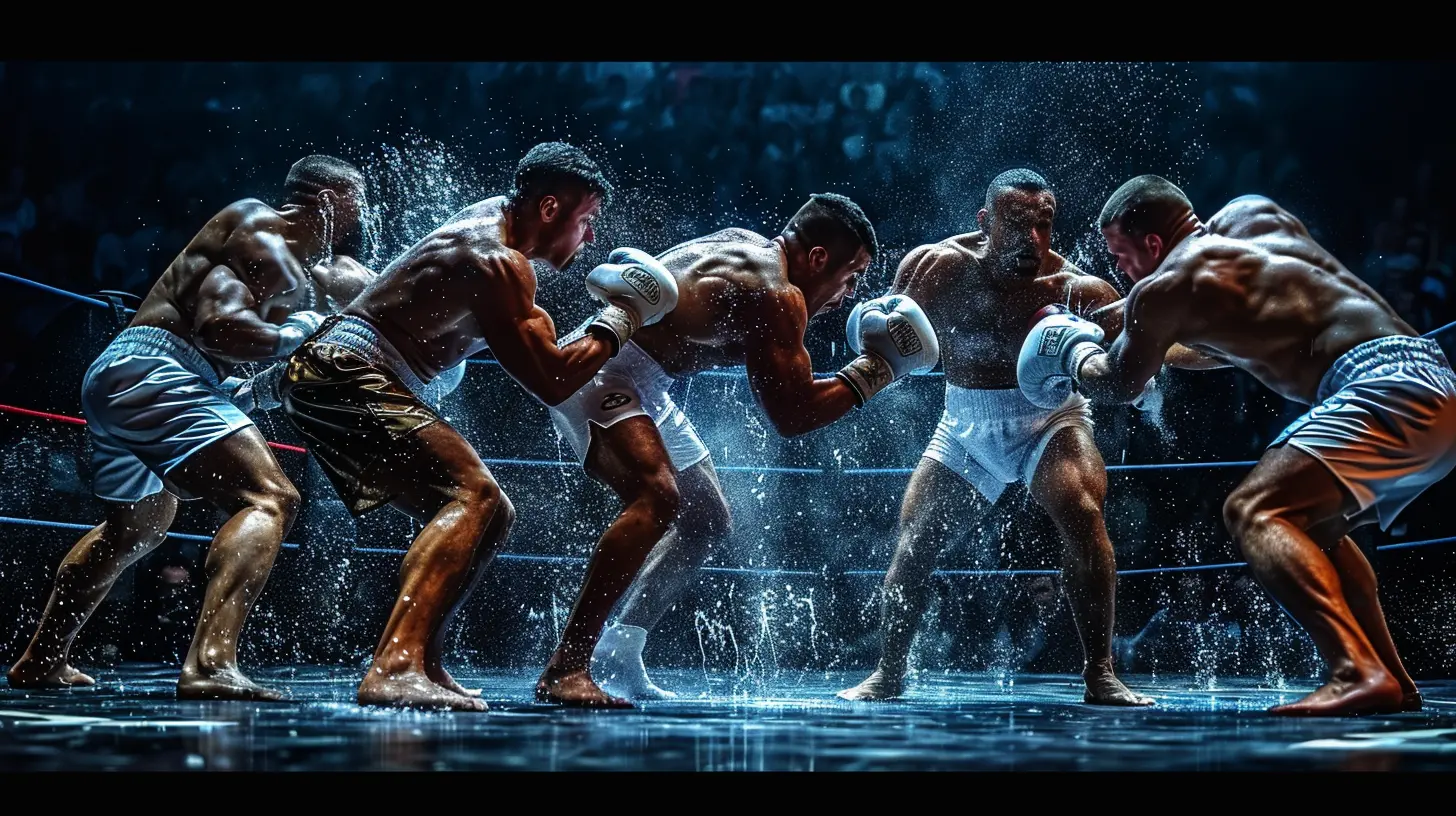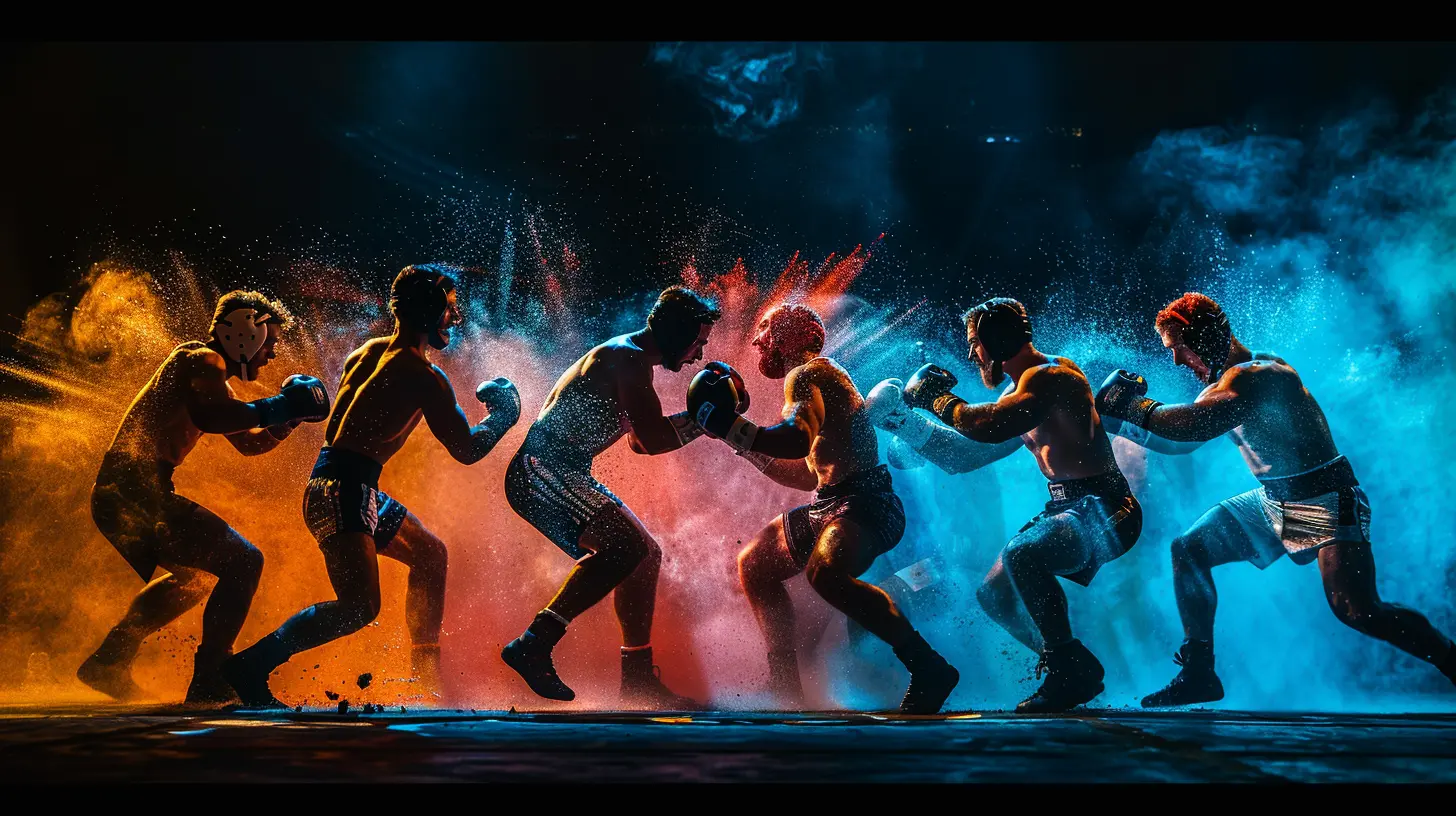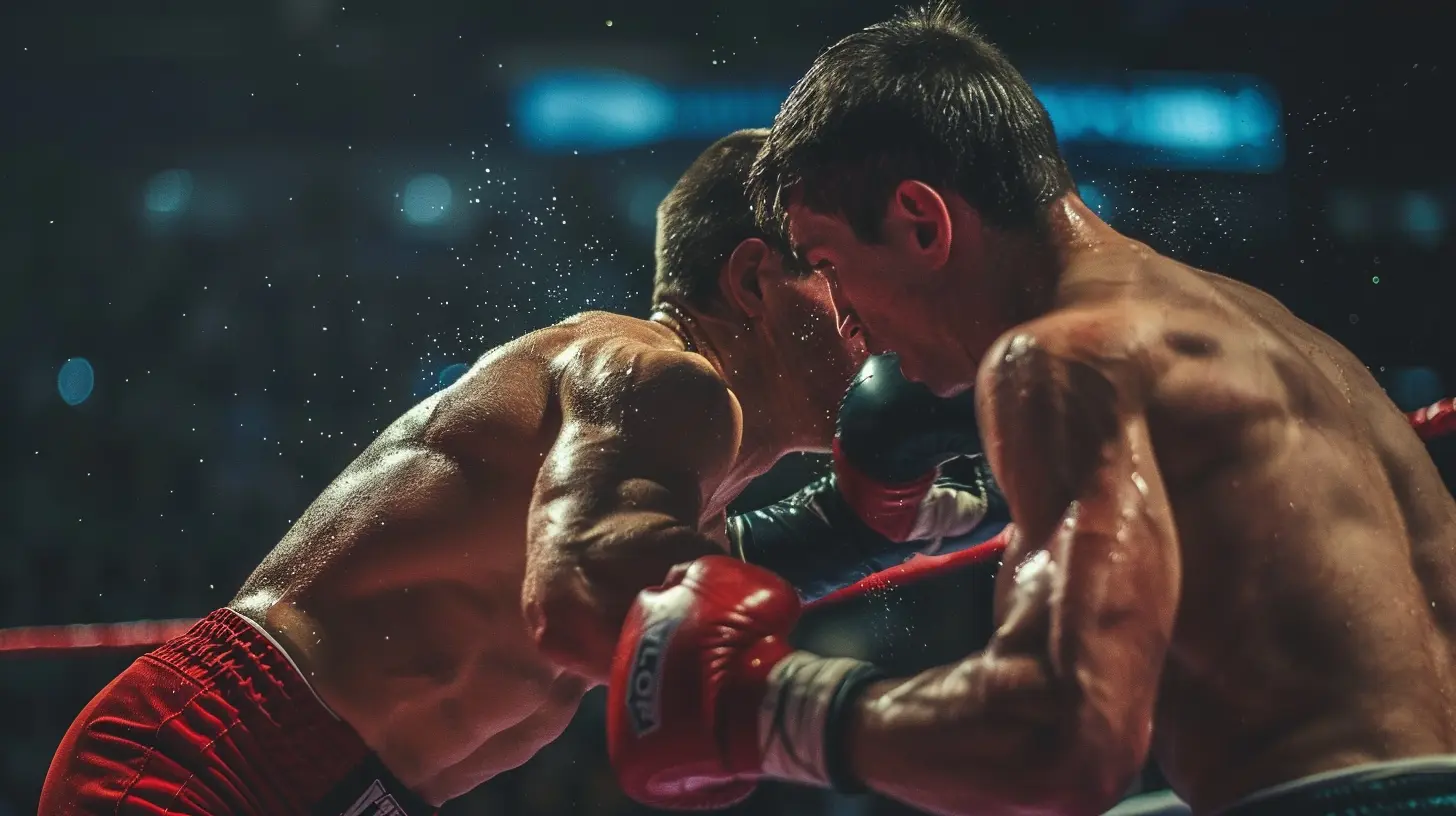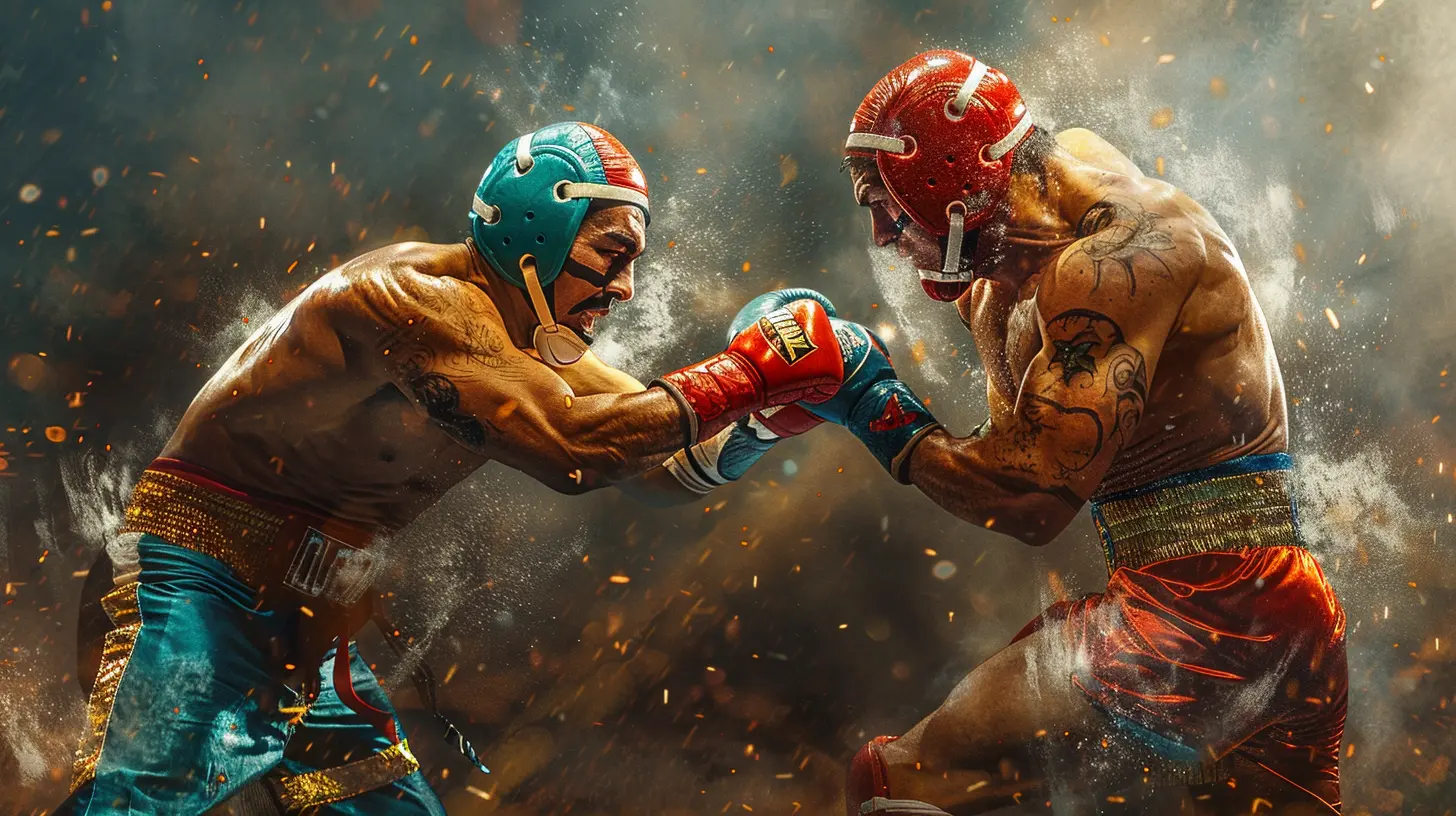Understanding the Different Styles of Wrestling Around the World
2 October 2025
Wrestling. Just the word itself can bring a rush of images to your mind—two athletes grappling on a mat, sweat dripping, muscles flexing, and the crowd erupting in cheers. But here's the thing: wrestling isn’t just one thing. It's not a monolith. Across the globe, from dusty rural arenas to Olympic-sized stages, wrestling takes on many different forms—each with its own flavor, rules, and rhythm.
So why does wrestling look so different in Japan compared to Senegal or Turkey? That's what we’re about to dive into. Whether you're a die-hard wrestling fan or just curious about the sport, understanding the different styles of wrestling around the world is like unlocking a global storybook of strength, tradition, and heart.
Let’s get into it.
Wrestling: A Global Legacy Rooted in Culture
Wrestling is arguably one of the oldest sports known to humankind. Yep, older than soccer, older than boxing. You can find ancient cave paintings in France showing wrestlers locked in combat. It’s been around since the times of the Pharaohs and the Olympic Games in Ancient Greece.But why has wrestling lasted so long and spread so wide? Simple—it’s universal. You don’t need fancy gear or a huge arena to wrestle. It’s raw, it’s personal, and it’s powered by tradition.
Different cultures have shaped wrestling into their own unique version. Some are fast-paced and technical. Others are ceremonial and theatrical. But all of them tell a story of resilience, courage, and pride.
Freestyle Wrestling: The Olympic Crowd-Pleaser
Let’s start with one of the most well-known styles—Freestyle Wrestling. If you’ve ever watched wrestling during the Summer Olympics, you’ve seen this style in action.In freestyle wrestling, you can use your entire body to attack—and your opponent’s entire body is fair game, too. That means you’ll see a lot of leg attacks, quick takedowns, and explosive moves. Think of it as a chess game at lightning speed.
What makes freestyle unique is its global appeal. It combines techniques from many other styles, making it a hybrid of sorts. Countries like Russia, the United States, Iran, and Japan dominate this format, and each brings something special to the mat.
Greco-Roman Wrestling: Power Meets Tradition
Now, if freestyle wrestling is the agile panther, Greco-Roman Wrestling is the raging bull.Here’s the kicker—no attacks below the waist. That’s right. In Greco-Roman wrestling, everything happens above the belt. That changes the game entirely. Wrestlers rely more on throws, locks, and upper-body strength. You’ll see dramatic lifts and slams that can resemble something you'd find in a movie.
This style has deep roots in ancient Greek traditions. It’s intense, disciplined, and all about control. And because you can’t use the legs for holds or trips, each move has to be deliberate and technical. It's not just brute force—it’s art with muscle.
Sumo Wrestling: Japan’s Spiritual Sport
Ever seen two massive men in mawashi (those traditional belts) facing off in a circular ring? Welcome to the world of Sumo Wrestling.Sumo isn’t just a sport—it’s a cultural ritual in Japan. Wrestlers, known as rikishi, train for years, often starting in childhood. They live in special “stables,” follow strict diets, and adhere to ancient traditions passed down for centuries. Before a match even begins, there’s a carefully choreographed set of rituals—salt throwing, stomping, clapping—all meant to purify the ring and prepare mentally.
The aim? Push your opponent out of the ring or make any part of their body other than their feet touch the ground.
Don’t let the big bodies fool you—sumo matches can be lightning-fast, sometimes done in seconds. It’s about leverage, center of gravity, and explosive timing.
Pehlwani: India’s Ancient Art of Wrestling
Pehlwani, also known as Kushti, is the traditional form of wrestling in India and Pakistan. But this is no ordinary wrestling. This is spiritual, disciplined, and a way of life.Matches usually happen in a clay or dirt pit, not on a mat. The athletes, known as pehlwans, train at akhadas—traditional wrestling gyms led by a guru. It’s not uncommon for training to start before sunrise, involving hundreds of repetitions, yoga, and a special high-protein diet centered around milk, almonds, and ghee.
It’s not just about physical strength. Pehlwani emphasizes humility, respect, and moral code. Winning in the ring is important, but being a good human comes first.
The style itself blends Persian and Indian techniques. It’s a ground-based game with a focus on clinches, throws, and pinning the opponent’s shoulders.
Shuai Jiao: China's Throw-Focused Style
Let’s head to China, where Shuai Jiao reigns as one of the oldest known styles of Chinese wrestling.Shuai Jiao means “throwing and falling,” and that sums it up perfectly. The goal is to use a combo of speed, balance, and technique to throw your opponent to the ground. Wrestlers wear jackets, much like in judo, and use them for grip and leverage.
What makes it interesting is that it’s more upright and stand-up based. You won’t see much ground fighting. Instead, it’s about quick footwork, hip movement, and outsmarting your opponent with fluid throws.
It’s often used as a foundational art in many Chinese martial arts systems because of its emphasis on balance and control.
Lucha Libre: Mexico’s High-Flying Spectacle
Alright, let’s dial up the drama a bit. Ever seen a masked wrestler leap off the ropes with a twisting somersault? Say hello to Lucha Libre—Mexico’s gift to the wrestling world.Yes, it’s theatrical. Yes, it’s entertainment. But it’s also rich in tradition and technical skill.
Lucha Libre translates to “free fighting,” and it features fast-paced moves, flips, dives, and a heavy focus on aerial techniques. Wrestlers, known as luchadores, often don elaborate masks symbolizing everything from animals to gods.
Underneath all that flair, there’s a deep culture. Many families have generations of luchadores. Removing an opponent’s mask mid-match is considered the ultimate insult.
This style has influenced wrestling worldwide, especially professional wrestling in the U.S. It’s not just combat—it’s storytelling in motion.
Turkish Oil Wrestling: Slippery Yet Serious
Imagine grappling with someone completely covered in olive oil. Sounds wild, right? That’s Turkish Oil Wrestling, or Yağlı Güreş, one of the oldest sports in Turkey.Wrestlers wear tight leather trousers called kispet and are doused in oil before the match. Getting a grip becomes incredibly difficult, which adds a whole new level of complexity. Matches can last for hours, and technique becomes even more important than strength.
The sport is deeply cultural and even spiritual. It dates back over 650 years and is celebrated with giant festivals. The annual Kırkpınar Oil Wrestling Festival is one of the oldest sporting events still held today.
It’s not just spectacle—it’s symbolic of endurance, power, and tradition.
Senegalese Wrestling: Rhythm, Ritual, and Raw Power
Now let’s travel to West Africa, particularly Senegal, where Laamb (Senegalese Wrestling) is more than just a sport—it’s a cultural phenomenon.Before matches begin, wrestlers perform dances, rituals, and wear magical charms called gris-gris for spiritual protection. Drummers play live to build up the energy, and the crowd dances along. The atmosphere is electric.
Senegalese wrestling is powerful and primal. The goal? Knock your opponent to the ground or out of bounds. There's slamming, lifting, and striking involved. And these athletes? They’re rock solid—some train by carrying livestock and battling ocean waves.
It’s raw, it’s rhythmic, and it’s revered across Senegal and neighboring countries.
Catch Wrestling: The British Origin of Modern Pro Wrestling
Let’s wrap up with a style that laid the groundwork for modern professional wrestling—Catch-As-Catch-Can Wrestling, or simply Catch Wrestling.Originating in England in the 19th century, catch wrestling is all about grabs, holds, and pins. It’s a no-frills, fast-moving style that allows submissions and joint locks. Think of it as a rough mix of submission grappling and old-school scrapping.
It became popular in carnivals and was a base for American pro wrestling in the early 1900s. Today, it’s seeing a bit of a revival among MMA fighters and grappling enthusiasts.
What’s cool about catch wrestling is its adaptability—it’s like the jazz of wrestling. There’s structure, sure, but a whole lot of improvisation.
Final Thoughts: One Sport, Infinite Stories
Wrestling isn’t just a sport—it’s a reflection of humanity. Every slam, twist, and pin is steeped in culture, history, and identity. From the disciplined halls of a Pehlwani akhada in India to the vibrant arenas of Lucha Libre in Mexico, wrestling styles reflect the values, rituals, and dreams of their people.And while the rules may differ, the heart of wrestling remains the same: two individuals testing their limits, driven by honor, pride, and the unshakable spirit to stand tall.
So next time you hear "wrestling," think beyond the mat. Think of the world.
all images in this post were generated using AI tools
Category:
WrestlingAuthor:

Ruben McCloud
Discussion
rate this article
1 comments
Atlas Wyatt
Great article! It’s fascinating to see how diverse wrestling styles reflect cultural history and athletic skill around the globe.
October 21, 2025 at 11:51 AM


